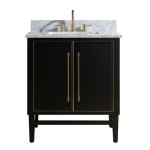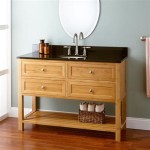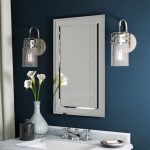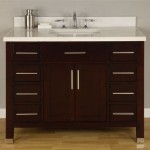How To Clean a Marble Top Vanity
Marble, a metamorphic rock prized for its elegance and unique veining, is a popular choice for vanity tops. Its natural beauty adds a touch of luxury to any bathroom. However, marble is a relatively porous material, making it susceptible to staining and etching if not properly cared for. Understanding how to clean a marble top vanity correctly is essential to maintaining its pristine appearance and prolonging its lifespan.
The following article provides a comprehensive guide on how to clean a marble top vanity, outlining the necessary tools, appropriate cleaning solutions, and preventative measures to protect this delicate surface from damage. Improper cleaning techniques can irreparably harm the marble, so adhering to recommended practices is crucial.
Understanding the Composition of Marble
Before detailing the cleaning process, it’s important to understand the fundamental characteristics of marble. Composed primarily of calcium carbonate, marble is alkaline in nature. This is a critical factor because acidic substances, such as vinegar, lemon juice, and many common household cleaners, can react with the calcium carbonate, causing etching. Etching appears as dull spots or rings on the marble surface, indicating that the acid has dissolved a portion of the stone. Once etched, the damage is often irreversible without professional restoration.
Furthermore, marble's porosity means it absorbs liquids relatively easily. This makes it prone to staining from spills like makeup, toiletries, and even hard water. Prompt cleanup is therefore vital in preventing permanent discoloration. While sealing can help reduce porosity, it does not eliminate it entirely, so proper cleaning practices remain essential.
Understanding these basic properties allows for informed decisions when selecting cleaning products and techniques, ensuring the marble remains undamaged during the cleaning process.
Essential Tools and Cleaning Solutions
Having the right tools and cleaning solutions is paramount to effectively and safely cleaning a marble top vanity. Using abrasive materials or harsh chemicals can lead to scratching, etching, and dulling of the surface. The following is a list of recommended tools and cleaning solutions:
- Soft Microfiber Cloths: These cloths are non-abrasive and ideal for wiping down the marble surface without causing scratches.
- Clean Sponge: A non-abrasive sponge can be used for gentle scrubbing in areas with stubborn stains. Ensure the sponge is clean to avoid transferring dirt back onto the marble.
- Spray Bottle: A spray bottle is useful for applying cleaning solutions evenly.
- pH-Neutral Stone Cleaner: This specialized cleaner is formulated specifically for natural stone surfaces like marble, ensuring it won't cause etching or discoloration. Look for cleaners that are explicitly labeled as safe for marble.
- Mild Dish Soap (Optional): In some cases, a very diluted solution of mild dish soap and water can be used for general cleaning. However, it is crucial to thoroughly rinse the surface afterward to remove any soap residue. Avoid using dish soaps with strong dyes or fragrances.
- Baking Soda (For Stains): Baking soda is a mild abrasive that can be used to create a poultice for drawing out stains.
- Distilled Water: Distilled water is preferred over tap water as it doesn’t contain minerals that can leave spots or deposits on the marble.
- Marble Sealer (For Protection): Applying a marble sealer after cleaning can help to protect the surface from future stains and water damage.
It's crucial to avoid harsh chemicals like bleach, ammonia, vinegar, lemon juice, and abrasive cleaners such as scouring powders. These substances can cause irreparable damage to the marble top.
The Cleaning Process: Step-by-Step Guide
This section outlines a detailed step-by-step guide for effectively cleaning a marble top vanity. Following these steps will minimize the risk of damage and ensure a clean, polished surface.
Step 1: Prepare the Area: Begin by removing all items from the vanity top, including toiletries, makeup containers, and any other objects. This ensures easy access to the entire surface and prevents accidental spills or damage to personal items.
Step 2: Dust the Surface: Use a soft, dry microfiber cloth to dust the entire marble surface. This removes loose dirt, debris, and hair, preventing them from being ground into the surface during the cleaning process. Pay particular attention to corners and edges where dust tends to accumulate.
Step 3: Prepare the Cleaning Solution: If using a pH-neutral stone cleaner, follow the manufacturer's instructions for dilution. Generally, a small amount of cleaner is mixed with water. If using mild dish soap, mix a very small amount (a few drops) with a large quantity of distilled water.
Step 4: Apply the Cleaning Solution: Lightly dampen a clean microfiber cloth with the prepared cleaning solution. Avoid saturating the cloth; it should be damp, not dripping. Gently wipe down the entire marble surface, working in small sections. For areas with light dirt or smudges, this may be sufficient. If there are more stubborn stains, proceed to the next step.
Step 5: Address Stains (If Necessary): If there are stains, avoid aggressive scrubbing. Instead, create a poultice using baking soda and distilled water. Mix the baking soda and water to form a thick paste. Apply the paste directly to the stain, covering it completely. Cover the poultice with plastic wrap and allow it to sit for several hours or overnight. The poultice will draw the stain out of the marble. After the poultice has dried, gently remove it with a plastic scraper or spatula. Wipe the area clean with a damp microfiber cloth.
Step 6: Rinse Thoroughly: After cleaning, thoroughly rinse the marble surface with clean distilled water. Use a clean, damp microfiber cloth to remove any remaining cleaning solution or baking soda residue. It is crucial to remove all traces of soap or cleaner, as they can leave a dull film on the marble surface.
Step 7: Dry the Surface: Use a clean, dry microfiber cloth to thoroughly dry the marble surface. This prevents water spots and helps to restore the marble's natural shine. Buff the surface gently to enhance its luster.
Step 8: Apply Marble Sealer (Optional): If desired, apply a marble sealer according to the manufacturer's instructions. This will help to protect the marble from future stains and water damage. Sealing should be done periodically, typically every 6-12 months, depending on the sealer and the level of use the vanity receives.
Preventative Measures to Protect Your Marble Top Vanity
Preventative measures are as important as cleaning in maintaining the beauty and longevity of a marble top vanity. Implementing these practices will minimize the risk of stains, etching, and other damage.
Wipe Up Spills Immediately: The most important preventative measure is to wipe up any spills immediately. Marble is porous and absorbs liquids quickly, so prompt action is crucial. Use a clean, dry cloth to blot the spill, avoiding rubbing, which can spread the stain. Even seemingly harmless liquids like water can leave spots if left to dry on the surface.
Use Coasters and Trays: Place coasters under cups and glasses to prevent rings from forming on the marble surface. Use trays to contain toiletries and cosmetics, preventing spills and protecting the marble from potentially staining substances like makeup and hairspray.
Avoid Harsh Chemicals: As previously mentioned, avoid using harsh chemicals such as bleach, ammonia, vinegar, lemon juice, and abrasive cleaners. These substances can cause irreversible damage to the marble. Opt for pH-neutral stone cleaners specifically designed for marble.
Regular Dusting: Regularly dust the marble surface to remove loose dirt and debris. This prevents dirt from being ground into the surface, which can cause scratches and dullness.
Use a Soft Brush for Cleaning: When cleaning around faucets and other fixtures, use a soft brush to gently remove any buildup of soap scum or hard water deposits. Avoid using abrasive brushes or scouring pads, as these can scratch the marble.
Regular Sealing: As mentioned above, regularly apply a marble sealer to protect the surface from stains and water damage. The frequency of sealing will depend on the sealer used and the level of use the vanity receives, but generally, sealing every 6-12 months is recommended.
Be Mindful of Sharp Objects: Avoid placing sharp objects directly on the marble surface, as they can scratch or chip the stone. Use mats or placemats to protect the surface from potential damage.
By consistently implementing these preventative measures, the marble top vanity can retain its beauty and elegance for years to come. Regular cleaning, combined with proactive preventative care, is the key to preserving the pristine condition of this luxurious material.

How To Clean And Maintain A Granite Or Marble Top Bathroom Vanity Chans Furniture

How To Clean A Marble Bathroom Vanity Top

How To Remove Stains From Cultured Marble Sinks And Shower Surrounds Ep 80

How To Clean Marble Bathrooms In 5 Easy Steps Riluxa Com

Caring For Your Cultured Marble Countertops R D Inc

How To Renew A Scratched Countertop Diy Family Handyman

A Comprehensive Guide To Cleaning And Maintaining Your Cultured Marble Bathroom Vanity Top

How To Clean Marble

Stone Vanity Top Polishing Service Tile Cleaning Agents Floor And

How To Renew A Scratched Countertop Diy Family Handyman







